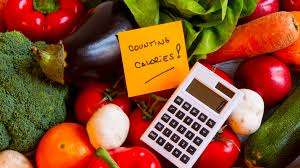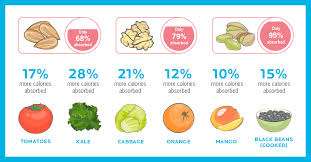When I first started my fat loss journey, like many people, I was enthusiastic about hitting the gym.
I assumed that as long as I exercised regularly, the fat would just melt away.
But after weeks of intense workouts, I found that the scale wasn’t budging much, and my body wasn’t changing in the way I had hoped.
That is when I realized the importance of paying attention to what I was eating—and more specifically, how much I was eating.
Calorie counting became the cornerstone of my meal planning, and it was not long before I noticed significant results.
It was not just about cutting out certain foods or following the latest diet trend; it was about understanding how calories affected my body and using that knowledge to create a consistent calorie deficit.
In this article, we will explore how calorie counting in meal planning aids fat loss, diving into the mechanics behind it and why it works so well for so many people.
Article Index:
- What is Calorie Counting?
- How a Calorie Deficit Leads to Fat Loss
- The Role of Macros in Calorie Counting
- Why Meal Planning is Key to Successful Calorie Counting
- The Science Behind Calorie Counting and Weight Loss
- How to Track Your Calories Using Apps and Tools
- FAQs on Meal Planning and Fat Loss
- Real-Life Examples of Successful Calorie Counting for Fat Loss
- Conclusion: How Calorie Counting in Meal Planning Aids in Fat Loss
What is Calorie Counting?
Calorie counting is the art (and sometimes agony) of tracking every bite, sip, and nibble you consume each day.
Whether it is a double-shot latte, a protein bar, or that “tiny” handful of trail mix that’s actually 200 calories, nothing escapes the logbook.
At first glance, it sounds simple—track your intake and stay within a calorie target to lose, gain, or maintain weight. But once you start, it is a revelation.
You may think you are eating clean—until you realize that the salad dressing, croutons, and cheese on your “healthy lunch” add up to more than the burger you skipped.
Studies have shown that people who track their food intake lose significantly more weight than those who do not. I agree binge eating disrupts metabolism but over here our discussion is careful food intake.
Logging meals creates awareness—arguably the most underrated fat-loss tool in existence. Once you see that a “light snack” of granola and yogurt is 400 calories, you think twice.
But calorie counting is not just about numbers—it is about macronutrients too. Protein, carbs, and fats do not just fill you up; they shape how your body burns fat, builds muscle, and manages hunger.
Research has found that diets with a higher protein intake not only preserve muscle during weight loss but also keep you fuller longer and rev up your metabolism.
That said, counting calories is not a magic wand. It requires consistency, and it is easy to under-report or burn out.
Some people become too obsessed, turning a helpful habit into a mental burden. For others, it is a short-term strategy to reset eating habits and learn portion control.
The key is to use it as a tool—not a lifelong sentence. Calorie counting builds nutritional awareness, teaches you what’s in your food, and helps you make informed decisions.
Just remember: one cookie would not ruin your progress, but five unlogged ones might sneak up on you!.
How a Calorie Deficit Leads to Fat Loss?
The fundamental principle behind fat loss is simple: you need to burn more calories than you consume. This is called creating a calorie deficit.
When you are in a calorie deficit, your body uses stored fat for energy, which leads to fat loss over time. This concept is backed by science and is the foundation of all weight loss strategies.
For example, if your body requires 2,000 calories to maintain its current weight, consuming 1,500 calories a day creates a 500-calorie deficit.
Over the course of a week, this 500-calorie deficit adds up to 3,500 calories, which is roughly equivalent to losing one pound of fat.
When I first started my fat loss journey, I did not understand the importance of this principle. It was not until I began calculating my calorie intake that I saw significant progress.
The idea of a calorie count deficit became my mantra. I used a burn calorie tracker to monitor my daily activity, ensuring that I was burning more calories than I was consuming.
The Role of Macros in Calorie Counting
While counting calories is essential for fat loss, paying attention to macronutrients—commonly referred to as macros—is equally important.
Macronutrients are the nutrients your body needs in large amounts: carbohydrates, proteins, and fats.
These macros provide the calories your body uses for energy, muscle repair, and other functions.
When I started tracking macros for fat loss, I realized that not all calories are created equal.
For instance, 100 calories of protein have a different effect on your body than 100 calories of sugar. Protein helps build and repair muscle, which is crucial when you’re losing fat.
On the other hand, consuming too many carbohydrates or fats can lead to an energy surplus, even if your overall calorie intake seems reasonable.
Using the “calculate my macros for weight loss” approach, I figured out how much of each macro I should be eating to support my fat loss goals while preserving muscle mass.
This way, I wasn’t just cutting calories—I was optimizing my nutrition for the best results.

Why Meal Planning is Key to Successful Calorie Counting?
Meal planning makes calorie counting much easier and more effective.
By planning your meals in advance, you are less likely to deviate from your calorie goals or resort to unhealthy food choices.
I found that when I did not plan ahead, I was more likely to grab something convenient but high in calories, which could quickly throw off my entire day.
Meal planning also allows you to accurately track your macros.
You can pre-determine what you’ll eat, ensuring that your meals align with your calorie and macro goals.
For example, if I know I need to consume 150 grams of protein daily, I can plan my meals accordingly, spreading that intake across breakfast, lunch, dinner, and snacks. If you cannot eat, opt for whey protein options instead.
Apps like “Lose It” calorie counter have been lifesavers in this regard. These tools make it easy to enter and track meals in advance, helping me stay on track with my goals.
>>> Want to Lose Weight Like I Did??? Check Out My “Secret Fat Loss Smoothie Recipe” TODAY! <<<
The Science Behind Calorie Counting and Weight Loss?
There is a reason why calorie counting is such an effective method for fat loss—it is backed by science.
A study published in The New England Journal of Medicine showed that participants who adhered to a calorie deficit lost significantly more fat than those who did not monitor their calorie intake.
When you consistently track your calories and ensure that you are in a deficit, your body is forced to tap into fat stores for energy.
This is the most direct and reliable way to lose fat because it is based on the simple principle of energy balance—consuming fewer calories than your body needs.
However, it is important to note that consistency is key. Occasional overeating, even when you are typically in a calorie deficit, can stall your progress.
This is why I emphasize the importance of accurately counting calories and ensuring that you stick to your plan.
How to Track Your Calories Using Apps and Tools?
In today’s digital age, tracking your calories has never been easier.
There are a variety of apps and tools available that help you log your meals, track macros, and monitor your progress.
Personally, I found that using a burn calorie tracker was instrumental in my fat loss journey.
Fitness Apps allow you to enter the foods you eat, calculate your daily caloric intake, and even determine your macros for fat loss.
These apps often come with extensive databases that make it easy to find and log foods accurately, whether you are at home or dining out.
For example, using a “Lose It” calorie counter, I could enter everything I ate throughout the day and see at a glance how close I was to my calorie goal.
This made it easy to make adjustments if I noticed I was approaching my limit too early in the day.
FAQs on Meal Planning and Fat Loss
Q-1: Why does putting numbers to meals beat vague “eat healthier” goals?
A-1: Fat loss needs a sustained, measurable energy deficit. Planning portions and calories lets you target a modest gap (about 500–750 kcal/day)—big enough to move the scale, small enough to limit hunger. It also reveals sneaky add-ons (oils, dressings, drinks) that quietly erase progress.
Q-2: If people underreport intake, isn’t calorie counting pointless?
A-2: Underreporting happens, but structure shrinks the error. Pre-logging meals, repeating simple “template” menus, and using portion-controlled elements reduce guesswork. If weight stalls for two weeks, trim 100–150 kcal/day or tighten portions. The scale and waist tape become calibration tools rather than judgment.
Q-3: How does protein-forward planning make the same calories work harder?
A-3: Protein costs more energy to digest and keeps you full longer. Building each meal around a protein anchor (eggs, yogurt, tofu, fish, chicken, legumes) plus high-fiber sides increases post-meal “burn” and curbs grazing, so adherence improves at the same calorie budget.
Q-4: Where does daily movement fit—aren’t we talking food?
A-4: Predictable meals stabilize energy and hunger, which helps you move more without trying. That non-exercise activity (steps, fidgeting, posture shifts) can burn hundreds of calories. Pair calorie planning with a step floor (e.g., 7–10k) to preserve this quiet advantage.
Q-5: Can meal timing change results even if calories match?
A-5: Often. Front-loading calories earlier and keeping dinner lighter/earlier reduces evening cravings and late snacking, making the plan easier to stick to. Same weekly deficit, smoother execution. Try shifting 10–20% of daily calories from late night to earlier meals and watch hunger cues improve.
Q-6: What’s the lowest-effort way to start without obsessing?
A-6: Use a 3-step scaffold:
-
Set a modest deficit.
-
Choose two repeatable breakfasts, two lunches, and one flexible dinner template (protein + veg + starch).
-
Track one thing daily (calories, weight, or photos).
Add small guardrails—pre-portion snacks, log liquids, eat protein first, and take a 10–15 minute post-meal walk. This keeps effort low while delivering consistent, compounding wins.
Real-Life Examples of Successful Calorie Counting for Fat Loss
One of the most encouraging aspects of calorie counting is how universal its success can be when done correctly.
In my own journey, I lost weight counting calories and ensuring I hit a consistent calorie count deficit.
This was not just about dropping pounds on the scale—it was about learning how to manage my portion sizes, make smarter food choices, and feel more in control of my diet.
I also know people who used calorie counting combined with macro tracking to fine-tune their fat loss.
One friend, who was an athlete, used a strategy called “determining macros for fat loss” to ensure he was getting enough protein while still maintaining a calorie deficit.
His results were impressive—he lost fat while preserving muscle mass, which was key for his performance.
In both examples, the common thread was the awareness and control that calorie counting provided.
It is a method that doesn’t rely on guesswork or restrictive diets—it is about understanding your body’s energy needs and eating accordingly.

Takeaway
To answer the question, “How does calorie counting in meal planning aid in fat loss?” the answer lies in its simplicity and effectiveness.
By understanding how many calories your body needs and consuming fewer than that amount, you create a calorie deficit that leads to fat loss.
Pairing this with meal planning ensures that you stay on track and avoid the temptations of impulsive eating. This leads to obesity induced cognitive decline.
Calorie counting is not just a temporary solution but a sustainable practice that teaches you how to manage your food intake, even in the long term.
The beauty of calorie counting is that it gives you the tools to make informed decisions about your diet, empowering you to reach your fat loss goals with confidence.
For me, the process of tracking my calories and planning my meals allowed me to lose weight, feel more energized, and better understand how my body responds to food.
Whether you are a seasoned gym-goer or someone just starting on their fat loss journey, calorie counting can be a game-changer if done consistently.
References:
